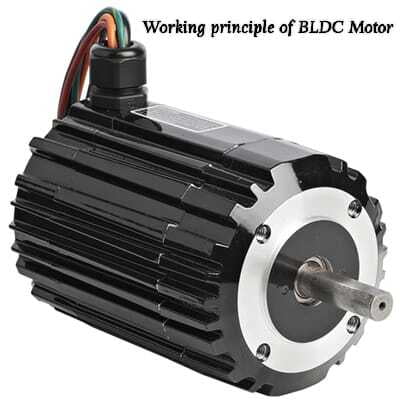BLDC Motor for Your Project: How to Choose the Right BLDC Motor?
Brushless DC (BLDC) motors have
become an integral part of modern engineering, finding applications in
robotics, electric vehicles, drones, and industrial automation. Their
efficiency, compact size, and reliability make them an ideal choice for a
variety of projects. However, selecting the right BLDC motor for your specific
needs can be daunting, given the wide range of options available. This guide
will help you understand the critical factors to consider when choosing a BLDC
motor for your project.
1. Understand Your Project Requirements
Before diving into the
specifications, it’s essential to have a clear understanding of your project’s
requirements:
Application Type:
Determine whether your project involves robotics, drones, conveyor belts, or
any other application.
Load Type: Identify the
type of load the motor will handle, such as constant, variable, or intermittent
loads.
Environmental Conditions:
Consider whether the motor will operate in extreme temperatures, dusty
environments, or underwater.
A detailed understanding of these
factors will help you narrow down the right motor specifications.
2. Evaluate Key Motor Specifications
When choosing a BLDC motor, you
need to evaluate several technical specifications to ensure compatibility with
your project:
a. Power and Voltage Ratings
Voltage Rating: Check the voltage
rating of the motor to match it with your power supply. Common voltage ratings
are 12V, 24V, and 48V.
Power Rating: The motor’s power
output (measured in watts) should meet the requirements of your application.
Higher power motors are suitable for heavy-duty applications, while lower power
motors work for lightweight projects.
b. Torque Requirements
Continuous Torque: Determine the
amount of torque required for your application under normal operating
conditions.
Peak Torque: Evaluate the
peak torque needed during start-up or for brief high-load conditions.
Choose a motor that provides
sufficient torque without exceeding its operational limits.
c. Speed Range
BLDC motors come with varying
speed ranges (measured in RPM). Consider the speed requirements of your
application to select a motor with an appropriate speed rating.
Some applications, like drones or
fans, require high-speed motors, while others, like conveyor belts, need
low-speed motors.
d. Efficiency
BLDC motors are known for their
efficiency, but this can vary between models. Look for motors with high
efficiency ratings, especially for battery-powered applications where energy
conservation is critical.
3. Determine the Motor Size and Weight
The size and weight of the motor
can significantly impact your project:
For drones and other lightweight
applications, choose compact and lightweight motors to optimize performance.
For stationary applications,
motor size and weight may be less critical but should still be compatible with
the available space.
4. Choose the Right Motor Controller
A motor controller is essential
for operating a BLDC
motor working effectively. When selecting a motor controller:
Ensure compatibility with the
motor’s voltage and current ratings.
Consider advanced features like
programmable speed control, braking, and direction control.
Opt for controllers with built-in
sensors if precise feedback is required.
5. Assess Sensor Options
BLDC motors are available in two
types:
Sensored Motors: These use
Hall effect sensors for precise position and speed control, making them
suitable for applications requiring high accuracy.
Sensorless Motors: These
are simpler and more affordable but may not provide the same level of control
as sensored motors.
Choose sensored motors for
applications like robotics or industrial automation where precise positioning
is critical. For simpler applications, sensorless motors can be a
cost-effective choice.
6. Consider Cooling Mechanisms
BLDC motors can generate
significant heat during operation, especially under high loads. Evaluate the
cooling mechanisms available:
Air-Cooled Motors:
Suitable for low-to-medium power applications.
Liquid-Cooled Motors:
Ideal for high-power applications where efficient heat dissipation is
necessary.
7. Verify Durability and Reliability
For projects operating in harsh
environments or requiring continuous use, choose motors with robust
construction and high durability ratings. Look for features like:
IP Ratings: Ensure the
motor is protected against dust and moisture (e.g., IP65 or higher).
Material Quality: Opt for
motors with high-quality bearings, magnets, and housing materials.
8. Check for Compatibility with Accessories
Your project may require
additional components, such as gears, encoders, or brackets. Ensure that the
BLDC motor you choose is compatible with these accessories to simplify
integration.
9. Factor in Cost and Budget
While it’s important to
prioritize performance and compatibility, cost considerations should not be
ignored. Compare different models and manufacturers to find a motor that fits
your budget without compromising on essential features.
10. Research and Test
Finally, research different motor
options and, if possible, test them in your application. Many manufacturers
provide detailed datasheets and sample motors for testing purposes. Testing
ensures that the motor meets your performance expectations under real-world
conditions.
Conclusion
Choosing the right BLDC motor for
your project requires careful evaluation of your application’s requirements,
motor specifications, and budget. By considering factors like power, torque,
speed, and compatibility, you can select a motor that delivers optimal
performance and efficiency. At Campus
Component, we offer a wide range of BLDC motors and accessories to meet
your project needs. Explore our collection today and take your project to the
next level!

.png)


Comments
Post a Comment